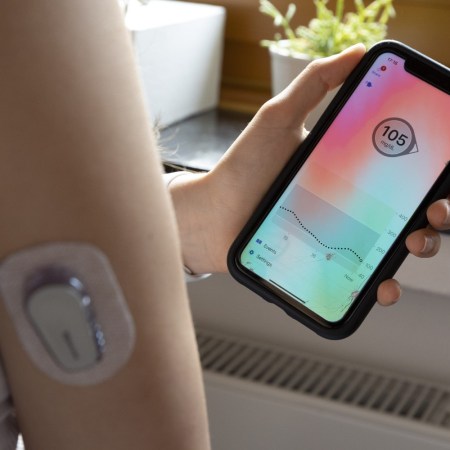According to a study published last week in PLOS Digital Health, wearing a “wrist device with accelerometer sensors” can be used to predict your mortality risk up to five years later…with startling accuracy.
That’s science-speak for go get yourself a fitness wearable, and it’s the latest indication that all of us — and especially seniors, who are the least likely to own the technology — should embrace a market that is expected to balloon to a size of nearly $400 billion by the end of the decade.
Sourcing data from the UK BioBank, a sprawling database with over 15 years of public medical records (as of yet, it has no equivalent in the United States), researchers cross-referenced health information from 100,000 British adults with a week of their wrist sensor data. When these subjects moved around for seven days, the monitors captured hours of distance and acceleration information. The researchers were able to distill that data down to a relay of six-minute chunks.
Those chunks predict for lung function, heart health and, ultimately, five-year mortality, with 73% precision. It goes without saying that people who move more live longer, but the same holds for people who move quicker — adults who walk at least 100 steps a minute can expect to live 15-20 years longer. A wrist-worn motion sensor catalogues the good, the bad and the speedy, offering subjects the chance to take an honest, ever-updating appraisal of their fitness, and potentially get in early for a necessary health screening.
At the moment, smartphones already amass a ton of personal health data. But their knowledge is hamstrung when someone regularly goes for a walk or run without a mobile in their pocket. Wearable sensors, meanwhile (which will only get cheaper in the coming years), could fill in those gaps.
If you wear a wearable like WHOOP, for instance, the idea of sharing its figures with your family doctor probably doesn’t sound too revolutionary. Like other companies in the health tech sector, WHOOP produces PDF charts with months of information — average heart rate, blood oxygen levels, skin temperature swings, etc. — and actively encourages you to share the charts with professionals. They want the data to aid in the short-term (a particularly laborious run might lead to a COVID test) and the long-term (fine-tuned sleeping patterns could help tamper your anxiety).
There are some understandable concerns on the side of providers — wearable tech is not regulated by HIPAA, it’s susceptible to hackers, and, as of yet, boils down to a loose patchwork of figures, produced by competing brands, with no centralized electronic health record system for users to upload into. Plus: some patients get obsessed with their numbers, and start to care more about the smiley/frowny faces they earn on their apps, as opposed to concrete advice imparted every few months by a physician.
It all amounts to a tricky and imperfect system, but it’s also one that will inevitably usher in some form of centralization by the end of the decade. Aging adults are better served adopting wearables now (like WHOOP, which doesn’t sell your information!), and taking a patient, bird’s eye approach with doctors, than shooing the technology away.
One piece of advice? Set up the wearable and let it run for a few weeks. Don’t try to learn what the figures mean. Live your life, collect data, than discreetly review it with a professional. Install some lifestyle shifts accordingly, and repeat. A future death predictor over 70% — for something as simple as walking — is nothing to ignore. But before you start walking quickly, take it slow in learning how to live with a wearable.
The Charge will help you move better, think clearer and stay in the game longer. Subscribe to our wellness newsletter today.
















